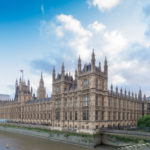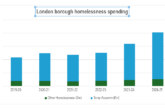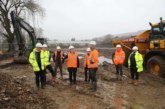On average at least one child in every classroom in the capital is homeless, according to new analysis from London Councils.
The latest figures gathered by the cross-party group reveal worsening homelessness pressures. London Councils’ data [1] suggests there are now 166,000 homeless Londoners — equivalent to the entire population of a city such as Oxford — living in temporary accommodation arranged by their local borough.
The homelessness total includes 81,000 children, meaning one in every 23 children in London is homeless [2].
This homelessness crisis is driven by a severe shortage of affordable accommodation in the capital. New research conducted by Savills and Rightmove on behalf of London Councils also suggests housing affordability for low-income Londoners in the private rented sector has shrunk even further due to increasing rents [3]. A government freeze on the Local Housing Allowance (LHA — the level of housing support low-income households are entitled to) means only 4.2% of London properties are affordable to those relying on LHA to meet their housing costs. This is a dramatic fall from the 18.7% of properties that were affordable through LHA in 2020-21.
Boroughs are calling on the Government to use the upcoming Budget to increase help for households struggling with their finances, including by raising LHA rates.
Cllr Darren Rodwell, London Councils’ Executive Member for Regeneration, Housing & Planning, said: “London’s homelessness crisis is getting even worse. The toxic combination of cost-of-living pressures and the chronic shortage of affordable housing means more and more Londoners — especially families with kids — are ending up homeless.
“The situation is unsustainable. Homelessness has a devastating impact on those who experience it, and it also leads to massive costs to councils and the wider public sector.
“We need urgent action from the government. The Chancellor must use the Budget to boost support for struggling households and to help us deliver the affordable homes London’s communities are desperate to see.”
London Councils’ analysis shows:
- The number of Londoners making homelessness presentations (i.e. turning to their local authority for housing support as they are at risk of homelessness) increased by 18% in November 2022 compared to the same month the year before.
- In December 2022 there were almost 2,000 homeless London families living in B&B accommodation — a 25% increase compared to the year before. B&Bs are used as last resorts when more suitable accommodation is not available. Boroughs say this worrying increase reflects the worsening housing pressures in the capital.
- London faces the most severe homelessness crisis in the country. The capital accounts for around two-thirds of England’s total number of households in temporary accommodation. The number of households in temporary accommodation in London has increased by 66% since 2010.
- Homelessness is a major cost concern for London local government. Boroughs collectively spend around £50m each month on temporary accommodation for homeless Londoners. Homelessness pressures have increased considerably since 2010 while borough’s overall resources remain 18% lower in real terms compared to then. London Councils estimates that boroughs need to make £100m of savings in their budgets (across all services – not just homelessness) this year.
London Councils wants to see a range of targeted measures from the Government to prevent homelessness and enable boroughs to build more affordable housing. These include:
Raise Local Housing Allowance. LHA has been frozen since 2020, but private rents have skyrocketed since then. As a result, there is a dramatically reduced number of properties affordable to low-income households reliant on benefits. Boroughs believe LHA should be increased so that it covers at least 30% of local market rates.
Increase Discretionary Housing Payments. These payments are used by councils to help residents in financial crisis meet their housing costs. They are an essential homelessness prevention tool, but government funding for Discretionary Housing Payments in 2023-24 has been frozen at 2022-23 levels, despite significantly increasing homelessness pressures.
Remove the unfair restrictions on Right to Buy sales receipts. Rules set by the Government mean that much of the money generated by council house sales is redirected to the Treasury. Boroughs need complete flexibility over how they use these sales receipts so that every penny raised can be reinvested locally in building replacement homes.
1] London Councils surveyed all London local authorities for their latest homelessness data, which covered November and December 2022. These figures are therefore more recent than the official government statistics, for which there is a six-month lag in publication timeframes. London Councils received survey responses from 28 boroughs. To ensure a pan-London assessment of the capital’s homelessness pressures, London Councils supplemented the 28 responses with estimated figures for the remaining boroughs by applying the average year-on-year increase from the responses received to the official homelessness statistics for December 2021.
[2] Census 2021 found 1,898,062 residents in London aged 0-17. Government statistics suggest average class sizes in London range between 22 and 26.
[3] New research from Savills commissioned by London Councils shows only 4.2% of London listings on Rightmove in 2022 were affordable to LHA claimants across one, two, three and four bedroom properties. This analysis has not previously been published.
Header image showing the Houses of Parliament ©chbaum/AdobeStock










